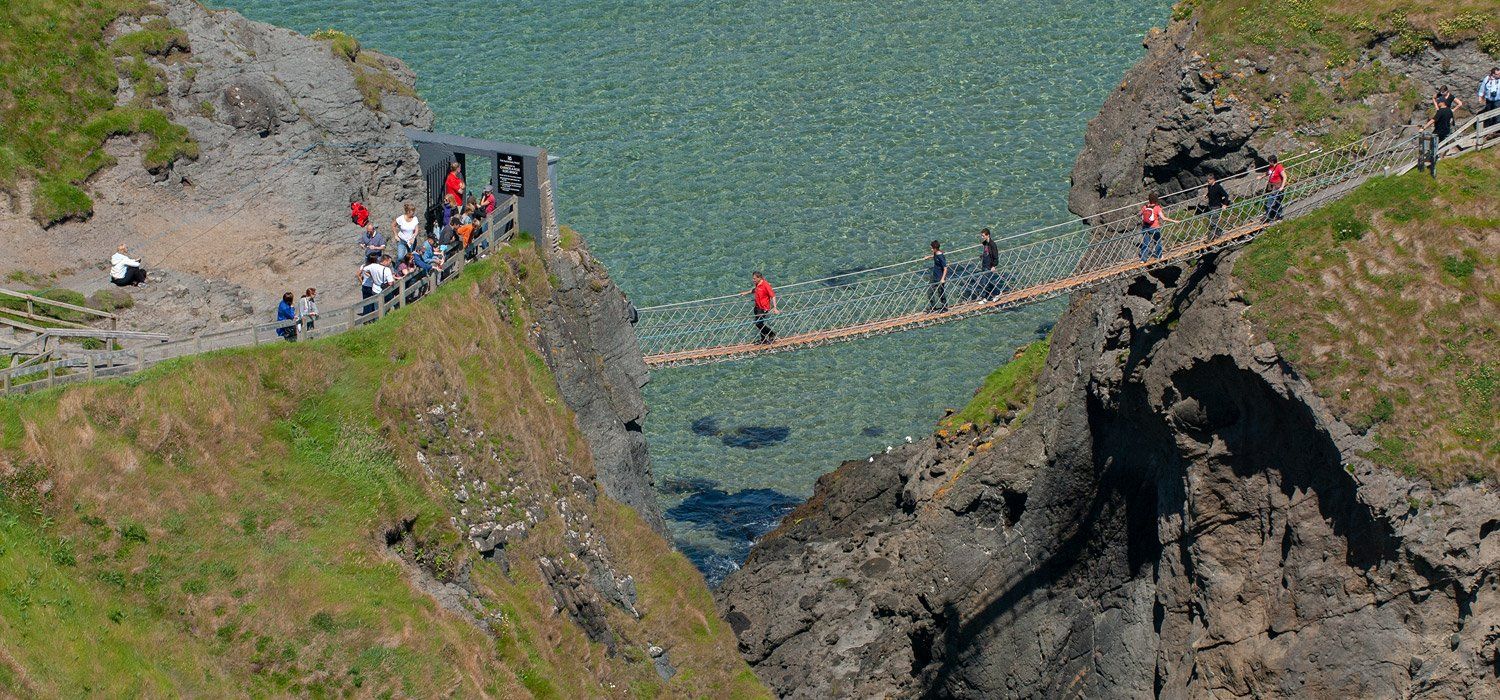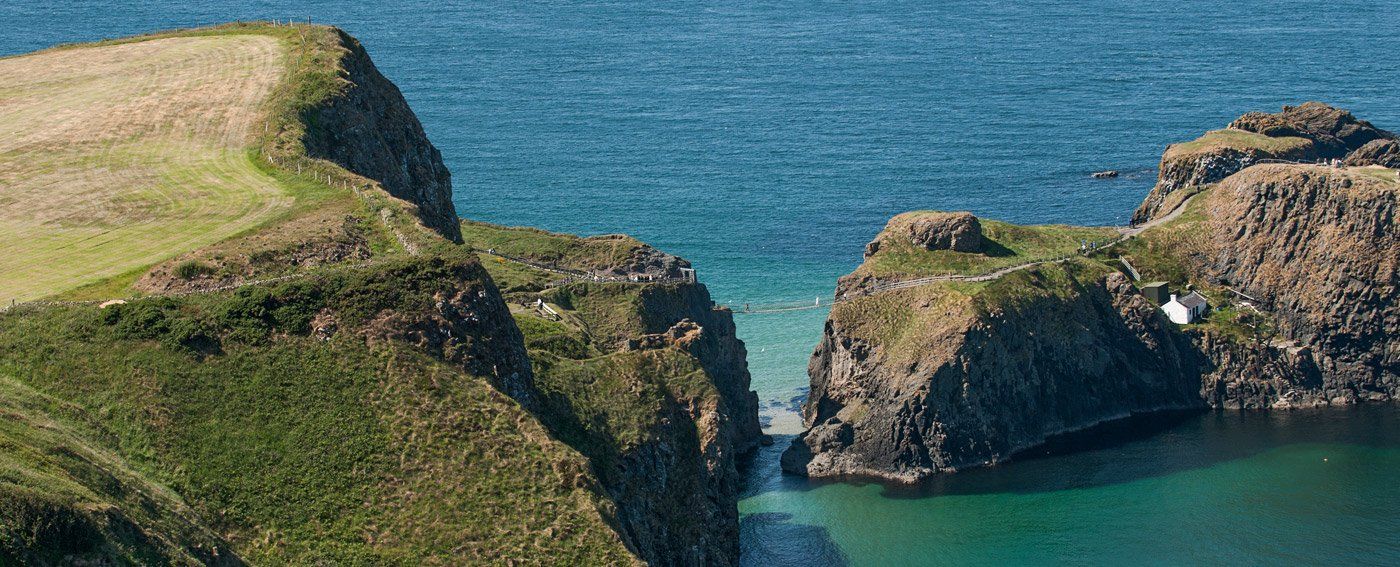Carrick a Rede History
Carrick a Rede translates into English as 'Rock in the Road' and comes from the Scots Gaelic 'Carraig a Rade', the island today is one of the key tourist attractions along the Causeway Coastal Route but what does the name reveal to us? The 'Rock' is the island in the 'Road' or the way of migrating salmon as they navigate around the coast back to the rivers of their origin, a yearly event which has been taking place for thousands of years. Carrick a Rede has been one of the prime locations for netting salmon since the mid-1600s, before the rope bridge was erected boatmen would row from Larry Bane and Ballintoy to set the nets.
The bridge was constructed in 1755 to make it easier to access the island and to create a permanent base for equipment which included a bothy, a winch and a drontheim boat from which the nets were set and tended. Once brought to the island the salmon would be carried in boxes across the bridge and up two steep fields to the ice-house located on the Ice's Brae on the main road just before you reach Portaneevey car park. Today, as you turn into the entrance to Carrick a Rede rope bridge you are descending a road into what was a limestone quarry, a large lime kiln exists at the bottom overlooked by Brockie Quarry.
The lower limestone quarry at Larry Bane operated for over 100 years, from around 1870 until it ceased in the early 1960s. A few years later the National Trust became custodians of the site and over the following years made improvements for visitors by providing parking, a tea room, shop and toilets where the old quarry weighbridge existed. Then in the 1980s, they created a new 1 km cliff top access path from the reception area around Larry Bane Bay to the rope bridge, this replaced the old access path which the fishermen used from the main road at the Ice's Brae.
What is surprising, considering the extremely basic construction of early bridges, is the fact that from its first use in 1755, there are no records of anyone losing their life by slipping off the bridge, considering that fishermen and their carriers would have crossed the bridge thousands of times carrying boxes of salmon or equipment, and later tens of thousands of visitors would cross the same bridge each year, it is remarkable that no-one has fallen off. Having said that there have been local characters who done performances like a handstand on top of a kitchen chair in the middle of the bridge or riding a bike across it.
Today's bridge is a model of health and safety perfection which will I am told, comfortably carry the weight of a double-deck bus which is reassuring to know when you walk across it. A collection of old photographs in Sheep Island View Hostel shows a local man doing various stunts on the bridge which include riding a bicycle across it and performing handstands on a chair in the middle. A visit here also opens up the other beautiful attraction which is Larry Bane Quarry which is now reclaimed by nature but well worth a visit for its outstanding views.





